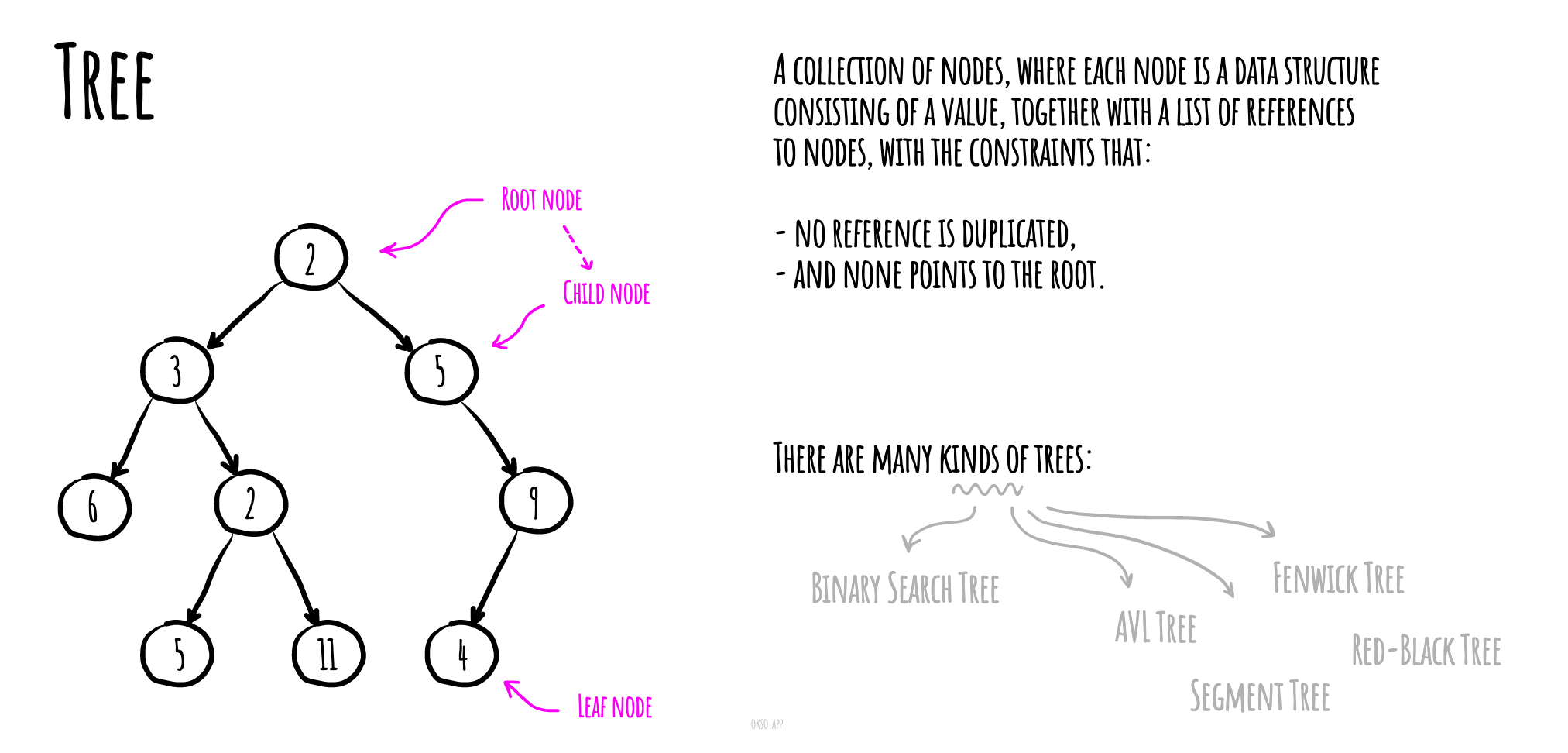树
在计算机科学中, 树(tree) 是一种广泛使用的抽象数据类型(ADT)— 或实现此 ADT 的数据结构 — 模拟分层树结构, 具有根节点和有父节点的子树,表示为一组链接节点。
树可以被(本地地)递归定义为一个(始于一个根节点的)节点集, 每个节点都是一个包含了值的数据结构, 除了值,还有该节点的节点引用列表(子节点)一起。
树的节点之间没有引用重复的约束。
一棵简单的无序树; 在下图中:
标记为 7 的节点具有两个子节点, 标记为 2 和 6;
一个父节点,标记为 2,作为根节点, 在顶部,没有父节点。

BinaryTreeNode
constructor
1
2
3
4
5
6
7
8
9
10
11
12
13
14
15
16
17
18
19
|
constructor(value = null) {
this.left = null;
this.right = null;
this.parent = null;
this.value = value;
this.meta = new HashTable();
this.nodeComparator = new Comparator();
}
|
leftHeight
1
2
3
4
5
6
7
8
9
10
11
12
13
|
get leftHeight() {
if (!this.left) {
return 0;
}
return this.left.height + 1;
}
|
rightHeight
1
2
3
4
5
6
7
8
9
10
11
12
13
|
get rightHeight() {
if (!this.right) {
return 0;
}
return this.right.height + 1;
}
|
height
1
2
3
4
5
6
7
|
get height() {
return Math.max(this.leftHeight, this.rightHeight);
}
|
balanceFactor
1
2
3
4
5
6
7
|
get balanceFactor() {
return this.leftHeight - this.rightHeight;
}
|
uncle
1
2
3
4
5
6
7
8
9
10
11
12
13
14
15
16
17
18
19
20
21
22
23
24
25
26
27
28
29
|
get uncle() {
if (!this.parent) {
return undefined;
}
if (!this.parent.parent) {
return undefined;
}
if (!this.parent.parent.left || !this.parent.parent.right) {
return undefined;
}
if (this.nodeComparator.equal(this.parent, this.parent.parent.left)) {
return this.parent.parent.right;
}
return this.parent.parent.left;
}
|
setValue(value)
1
2
3
4
5
6
7
8
9
10
11
12
|
setValue(value) {
this.value = value;
return this;
}
|
setLeft(node)
1
2
3
4
5
6
7
8
9
10
11
12
13
14
15
16
17
18
19
20
21
22
|
setLeft(node) {
if (this.left) {
this.left.parent = null;
}
this.left = node;
if (this.left) {
this.left.parent = this;
}
return this;
}
|
setRight(node)
1
2
3
4
5
6
7
8
9
10
11
12
13
14
15
16
17
18
19
20
21
|
setRight(node) {
if (this.right) {
this.right.parent = null;
}
this.right = node;
if (node) {
this.right.parent = this;
}
return this;
}
|
removeChild(nodeToRemove)
1
2
3
4
5
6
7
8
9
10
11
12
13
14
15
16
17
18
19
20
21
22
23
24
25
|
removeChild(nodeToRemove) {
if (this.left && this.nodeComparator.equal(this.left, nodeToRemove)) {
this.left = null;
return true;
}
if (this.right && this.nodeComparator.equal(this.right, nodeToRemove)) {
this.right = null;
return true;
}
return false;
}
|
replaceChild(nodeToReplace, replacementNode)
1
2
3
4
5
6
7
8
9
10
11
12
13
14
15
16
17
18
19
20
21
22
23
24
25
26
27
28
29
|
replaceChild(nodeToReplace, replacementNode) {
if (!nodeToReplace || !replacementNode) {
return false;
}
if (this.left && this.nodeComparator.equal(this.left, nodeToReplace)) {
this.left = replacementNode;
return true;
}
if (this.right && this.nodeComparator.equal(this.right, nodeToReplace)) {
this.right = replacementNode;
return true;
}
return false;
}
|
traverseInOrder
1
2
3
4
5
6
7
8
9
10
11
12
13
14
15
16
17
18
19
20
21
22
23
24
|
traverseInOrder() {
let traverse = [];
if (this.left) {
traverse = traverse.concat(this.left.traverseInOrder());
}
traverse.push(this.value);
if (this.right) {
traverse = traverse.concat(this.right.traverseInOrder());
}
return traverse;
}
|
toString
1
2
3
4
5
6
|
toString() {
return this.traverseInOrder().toString();
}
|
